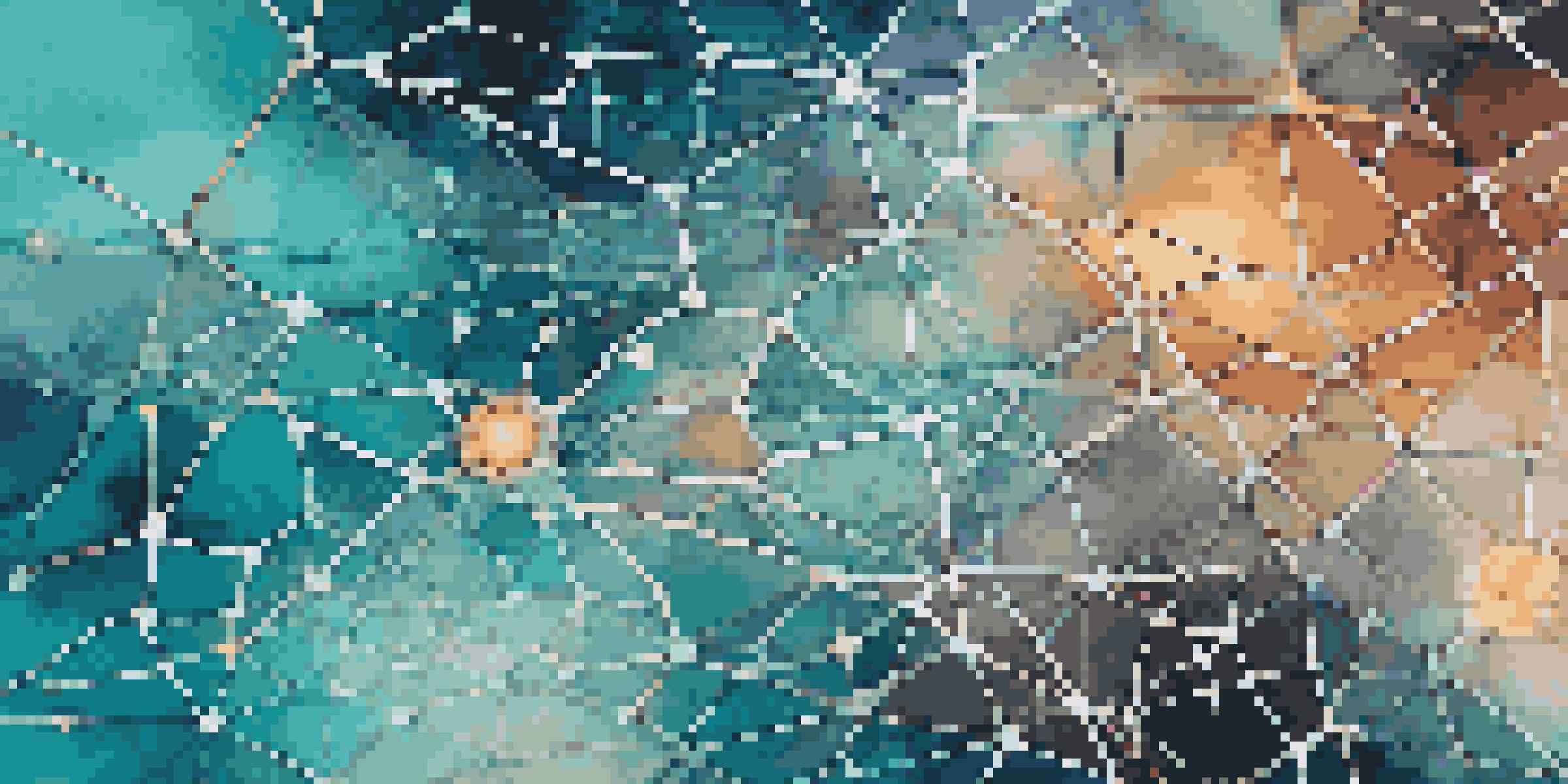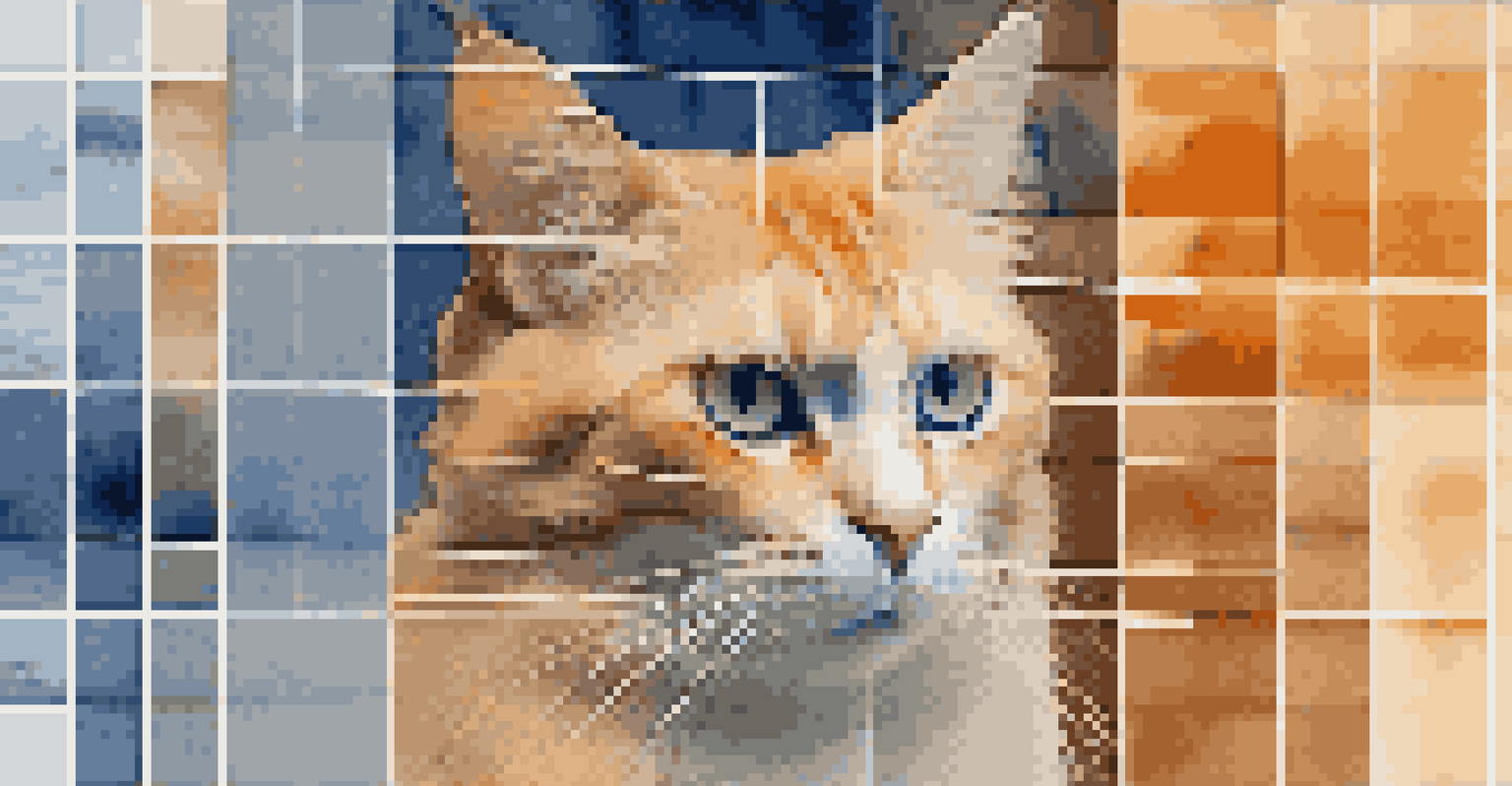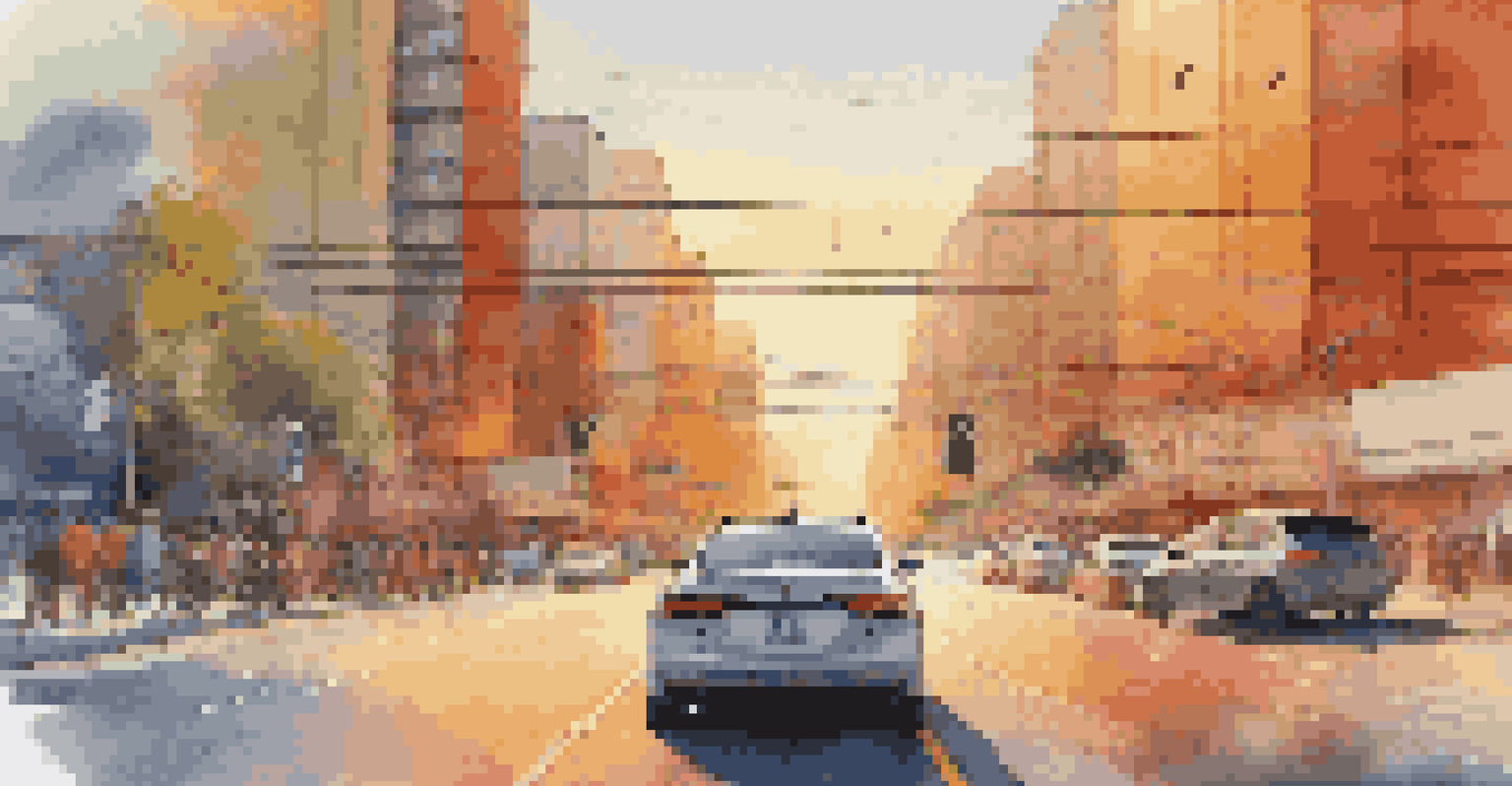Neural Networks and Their Role in Computer Vision Applications

Understanding Neural Networks: The Basics
Neural networks are inspired by the human brain, designed to recognize patterns. At their core, they consist of layers of interconnected nodes, or 'neurons,' that process data. Each connection has a weight that adjusts as learning occurs, allowing the network to improve its accuracy over time.
The great thing about neural networks is that they can learn and adapt, making them incredibly powerful for tasks like image recognition.
Think of neural networks like a student learning to identify objects. Initially, the student may struggle to distinguish between a cat and a dog. However, with practice and feedback, they become more adept, just as a neural network refines its ability to recognize images through training.
This adaptability is crucial for computer vision applications, where the ability to interpret visual data accurately can lead to innovations in various fields, from healthcare to autonomous vehicles.
The Role of Convolutional Neural Networks (CNNs)
Convolutional Neural Networks, or CNNs, are a specific type of neural network particularly effective in processing visual data. They function by applying filters to images, detecting features such as edges and textures, which are essential for image classification. This makes them a powerhouse in the realm of computer vision.

Imagine a CNN as a detective examining a crime scene. Instead of looking at the whole picture at once, it focuses on small sections to gather clues, piece by piece. This step-by-step analysis helps the network understand the broader context of the image.
Neural Networks Mimic Human Learning
Neural networks are designed to recognize patterns by adjusting weights during training, similar to how a student learns from feedback.
CNNs have revolutionized fields like facial recognition and medical imaging, enabling computers to interpret and analyze images with remarkable precision and speed.
Applications of Neural Networks in Computer Vision
Neural networks are transforming how various industries use visual data. For instance, in healthcare, they assist in diagnosing diseases from medical images, identifying conditions like tumors more accurately than human eyes. This not only speeds up the diagnosis process but also enhances patient outcomes.
Deep learning will revolutionize industries, and neural networks are at the heart of this transformation, especially in the realm of computer vision.
In the automotive industry, neural networks are pivotal for developing self-driving cars. They analyze real-time visual data from cameras to detect pedestrians, road signs, and obstacles, ensuring safe navigation. The blend of speed and accuracy in these applications exemplifies the power of neural networks.
From retail to agriculture, the applications of neural networks in computer vision are vast and varied, proving their versatility and importance in today’s tech-driven world.
Challenges in Implementing Neural Networks
Despite their advantages, implementing neural networks in computer vision comes with challenges. One major hurdle is the need for large datasets to train these networks effectively. Without sufficient data, the network may struggle to learn, leading to inaccurate outputs.
Additionally, training neural networks can be computationally intensive, requiring significant processing power and time. This can be a barrier for smaller organizations that lack access to advanced technology or resources.
CNNs Enhance Image Analysis
Convolutional Neural Networks excel at processing visual data by focusing on small sections of images to detect essential features.
Moreover, there’s the challenge of interpretability. Neural networks often operate as 'black boxes,' making it difficult to understand how they arrive at specific decisions. This lack of transparency can be a concern, especially in critical applications like healthcare.
The Future of Neural Networks in Computer Vision
The future of neural networks in computer vision looks promising, with continuous advancements on the horizon. Researchers are exploring new architectures and training methods that could enhance the efficiency and accuracy of these networks. Innovations like transfer learning, where models trained on one task are adapted for another, are gaining traction.
As hardware technology evolves, we can expect faster training times and the ability to handle larger datasets, making neural networks even more accessible. This democratization of technology could enable smaller companies to leverage these powerful tools.
Furthermore, ethical considerations will shape the development of neural networks, ensuring that their use in computer vision is responsible and fair. As we move forward, balancing innovation with ethical practices will be key to harnessing the full potential of these technologies.
Real-World Success Stories Using Neural Networks
Several companies have already harnessed the power of neural networks in their computer vision applications. For instance, Google Photos uses advanced neural networks to automatically categorize and tag images, making it easier for users to search their photo libraries. This seamless integration showcases the practical benefits of employing this technology.
In agriculture, companies are using neural networks to analyze aerial imagery, helping farmers monitor crop health and optimize yields. By detecting issues early, farmers can take action, ultimately leading to more sustainable practices.
Challenges in Neural Network Use
Implementing neural networks requires large datasets and significant computational power, posing challenges for many organizations.
These success stories highlight not just the versatility of neural networks, but also their potential to create significant positive change across various sectors.
Getting Started with Neural Networks for Vision Tasks
If you're interested in exploring neural networks for computer vision, there are various resources available to get started. Online platforms offer courses and tutorials that break down the complexities of building and training neural networks. Websites like Coursera and Udacity provide structured learning paths tailored for beginners.
Additionally, open-source frameworks such as TensorFlow and PyTorch make it easier for developers to experiment with neural networks. These tools come with pre-built models and extensive documentation, allowing users to dive right into their projects without starting from scratch.

Engaging with community forums and groups can also provide support and inspiration as you embark on your journey into the world of neural networks and computer vision.